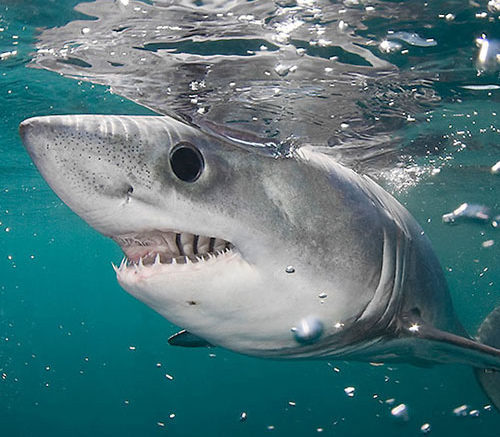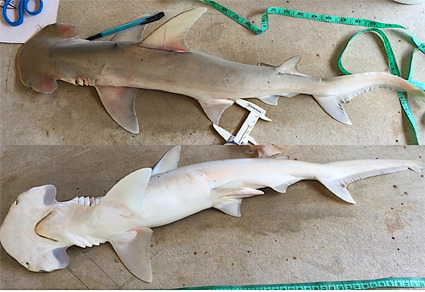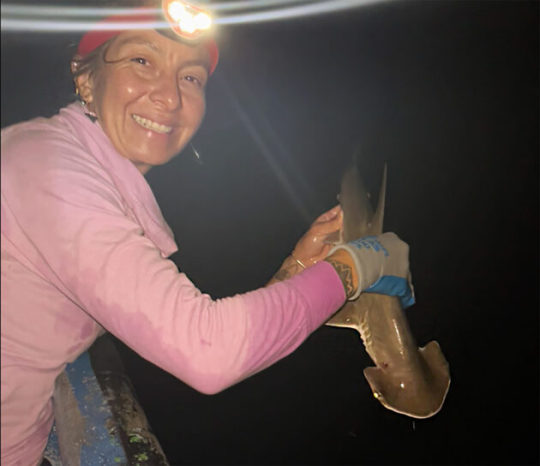#Caribbean reef shark
Explore tagged Tumblr posts
Text



Three sharks that I have illustrated:
The bull shark, Caribbean reef shark, and sand bar shark.
Yes, I love sharks too! Cetaceans are honestly a gateway into loving other marine animals, and for me, it just happened to be their fishy counterparts. As for which species is my favorite, well, there are two, and so far, I illustrated one of them, which is the bull shark.
73 notes
·
View notes
Text

I love this animal...the bark!
#paw prints#my art#artblr#mine#traditional art#traditional drawing#traditional illustration#acrylic markers#marker art#marine animal#marine life#marine life art#sharks#shark drawing#hammerhead shark#caribbean reef shark#leopard shark
17 notes
·
View notes
Text
🦈 Daily Shark Fact: 🦈
Caribbean Reef Sharks, when threatened, the Caribbean Reef Shark is known to do a “threat dance” that includes swimming in zig-zag motion while dipping the pectoral fins at intervals of 1-2 seconds, as if flexing them. When divers see this, they know it is best to get away as quickly as possible.


#caribbean reef shark#reef shark#shark blog#advocacy for sharks#respect the locals#save the sharks#shark awareness#sharks#shark facts#daily shark facts#cartilaginous fish#facts about sharks#just a girl who loves sharks#i love sharks#shark post#sharks of tumblr#shark tumblr#sharks are important#sharks are cool#sharks are friends not foes#fyp#the more you know#sharks dont infest oceans#protect sharks
145 notes
·
View notes
Text

Beautiful bby's
2 notes
·
View notes
Photo

"Jaws-Ome"
The Caribbean Reef Shark is an impressive and fast hunter. With the help of a long shutter speed, two underwater strobes and some speedy camera movement, the photographer created this breathtaking portrait of the dynamic apex predator. Sharks are a protected species in the Bahamian reefs, like in many other parts of the world's oceans, yet 80-100 million sharks get killed every year. A strong market demand for shark fins is the main driver. In order for shark conservation to be a success, Magnus believes that there needs to be an understanding that living sharks hold a greater value than dead ones. By Magnus Lundgren.
19 notes
·
View notes
Text
Caribbean reef shark (Carcharhinus perezii) | Porbeagle shark (Lamna nasus)


Sharkest shark polls
81 notes
·
View notes
Text

tumblr mobile is bugging so the post is a bit late but heres number 4 (caribbean reef shark)
8 notes
·
View notes
Text
Study will fill data gap on endangered local sharks
Tagging reef sharks for the new study (photo credit: James Dartnell) (CNS): The Department of Environment (DoE) has secured UK funding for pop-off satellite archival tags to study the movements of Caribbean reef sharks (Carcharhinus perezi) in the ocean around the Cayman Islands. Due to their ecological and socio-economic significance to Cayman, all sharks are protected species and are now…
#Caribbean reef shark#Darwin Plus Local#Department of Environment#Dr Johanna Kohler#Featured#John Bothwell#Tim Austin
0 notes
Text
btw my Agent 4 and Neo 3 are sharklings :3
#Mako [Neo 3]#Reef [4]#Fun Fact !! Their both named after sharks :3#Neo 3 -> Mako Shark#Agent 4 -> Caribbean Reef Shark#Author_Cat.txt
1 note
·
View note
Text
I Love Sharks 🩵 🦈

Guys did you know l loved sharks
here, look at my shark
1 note
·
View note
Text


NEW HAMMERHEAD SHARK JUST DROPPED
Not every day does a new shark get discovered! Meet the Shovelbill Shark (Sphyrna alleni), a newly described species of hammerhead shark named after Microsoft co-founder and philanthropist Paul Allen. This new species is found in the coastal waters of the Caribbean and southwest Atlantic.
Hammerhead sharks are easily recognized by their laterally expanded and dorsoventrally compressed heads. Genetic studies have revealed that what was once thought to be a single bonnethead species (Sphyrna tiburo) is actually a complex, with Sphyrna alleni now recognized as a separate species. A longtime advocate for wildlife conservation, Paul Allen and his Paul G. Allen Family Foundation supported Global FinPrint, an international survey of the world’s reef sharks and rays. It was during this project that scientists conducted much of the fieldwork necessary to describe this newly recognized species. The Shovelbill Shark is smaller than the bonnethead, with distinct genetic and morphological characteristics, including a different number of vertebrae, which suggest it is separate from other hammerhead species. This new species is distributed from Belize to Southern Brazil, inhabiting estuaries, coral reefs, sandy and muddy bottom beds, seagrasses, and mangroves.

The Shovelbill Shark is a common component of artisanal fisheries in many Latin American countries and currently lacks proper management or protection. Previous reports indicate that this new species is undergoing overexploitation, making it imperative to safeguard their populations and establish fisheries regulations.
Photographs: Above is a male shovelhead shark (Sphyrna alleni), described from the Caribbean and the Southwest Atlantic. Below is Cindy Gonzalez, the lead researcher of the study, tagging the new species Sphyrna alleni (photo courtesy of the Mays Family Foundation).
Reference: Gonzales et al., 2024. Sphyrna alleni sp. nov., a new hammerhead shark (Carcharhiniformes, Sphyrnidae) from the Caribbean and the Southwest Atlantic. Zootaxa.
652 notes
·
View notes
Text
🦑 Daily Cephalopod Fact: 🦑
Caribbean Reef Squid: A phenomenon, deemed the "half-and-half" body pattern, is a body morph that occurs during interactions with other cephalopods. One half of the cephalopod's body gets darker than the typical coloration a few minutes after the interaction occurs. This color-change is also observed during the sleeping state. The extended 'quiet state' results in a pale, uniform color compared to the shorter 'active state' including varying colors, textures, and patterns.


#caribbean reef squid#reef squid#squid#mollusk#cephalopod#daily cephalopod#daily cephalopod fact#cephalopod facts#facts about cephalopods#shark blog#respect the locals#ocean animal#ocean life#ocean#marine biology#marine life#marine animals#marine
59 notes
·
View notes
Text

Meet the Caribbean reef octopus (Octopus briareus)! This reef-inhabiting cephalopod lives in warm shallow waters, spanning southern Florida to the Caribbean, through to South America’s northern coast. It’s distinguished by its eye-catching blue coloring, but this master of disguise can change its looks in an instant. Like other octopuses, it uses pigmented cells in its skin, called chromatophores, to alter its appearance. When confronted by a foe, such as a shark, it may emit a cloud of unpleasant-tasting ink to deter its enemy from further pursuit.
Photo: francoislibert, CC BY-NC-SA 4.0, iNaturalist
#science#natural history#nature#animals#ocean life#octopus#fish#sea creatures#coral reef#did you know#fact of the day#animal facts#marine biology#cool animals#camouflage
957 notes
·
View notes
Text
Fish of the Day
Today's fish of the day is the bonnethead shark!

The bonnethead shark, also called bonnet shark, or shovelhead, scientific name Sphyrna tiburo, is known for its unique head shape. It is often thought that the bonnethead shark is a young hammerhead shark, and despite belonging to the same family, Sphyrnidae, they are not the same species. Unlike the hammerheads worldwide range, the bonnethead shark's natural range only stretches from Southern Canada down to The coast of Brazil and Peru, with populations on both coasts of the Americas. It lives primarily in estuaries or bays, living around vegetation, sandy bottomed areas, or reefs. These are a migratory species: during the summer they move inshore and further North, but during Winter they move back south. Eastern populations concentrate around the Carolinas in Summer, and the Florida coast or Caribbean sea during the other months, but there are no concentrated points known for Pacific populations.

Bonnethead sharks, similar to other sharks of their size, eat primarily crustaceans. Crabs, shrimp, mollusks, and small fish. Similar to hammerhead sharks, they have many electromagnetic sensors on the underside of the head, this is the reason for the spade shape as the spacing of the sensors allows them to better find prey below them. They hunt along the sea bed, moving the head similar to how one moves a metal detector, looking for electromagnetic irregularities produced by living beings. After detection, the shark turns sharply and bites into the sediment, then grinding prey and swallowing. When unable to find prey, or in larger groups they also have been found eating seagrass. Other than for detection of prey, this head can also be used for better vision: as the eyes are faced to the sides this gives them a much wider field of view, allowing them to see if any predators are around, something that gives them a higher chance of surviving past childhood.

The reproduction of the bonnethead shark is viviparous, meaning that the baby is formed inside the mother and born alive. breeding is thought to take place around spring and autumn in the Atlantic populations, but may take place year round without a proper season for it. However, these fish will breed only after they've reached 31 inches in females, and 24 inches in males at around their second year of life. Then, after breeding, gestation takes only 5 months before they have anywhere between 4-12 pups, who are already 12 inches in length. These pups are then abandoned, primarily to keep the parents from feeding on their own offspring, and will live in and around seagrass beds they were born in. This is where they can hide from predators for the first few years. The largest bonnethead shark reported was 4 feet in length, but most are only 2.5-3 feet long. Male and female bonnetheads can be told apart by the sexual dimorphic morophology of the head shape. In females, the head is rounded, but males have a bulge shape around the midline of the head, referred to as a cephalofoil.

Their behavior is unlike many sharks, as bonnetheads are known to exist in groups. Living in smaller numbers of 5-15 in a pod, although there have been schools of thousands reported to be traveling with one another. These groups are not territorial, but they have a hierarchy within them. Strangest of all, these sharks appear to communicate with one another using cerebrospinal fluid as a chemical communicator between individual sharks, letting the others know where they are at any given time.

That's the bonnethead shark, everybody! Have a wonderful day.
#fish#fish of the day#fishblr#fishposting#aquatic biology#marine biology#freshwater#freshwater fish#animal facts#animal#animals#fishes#informative#education#aquatic#aquatic life#nature#river#ocean#shark#sharks#bonnethead#bonnethead shark#bonnet shark#shovel shark#shovelhead shark#hammerhead shark
127 notes
·
View notes
Text
Caribbean reef shark (Carcharhinus perezii) | Megamouth shark (Megachasma pelagios)


90 notes
·
View notes
Text
It is said that the reef shark once ruled the seas in the Caribbean. But, following the barracuda ta...
88 notes
·
View notes